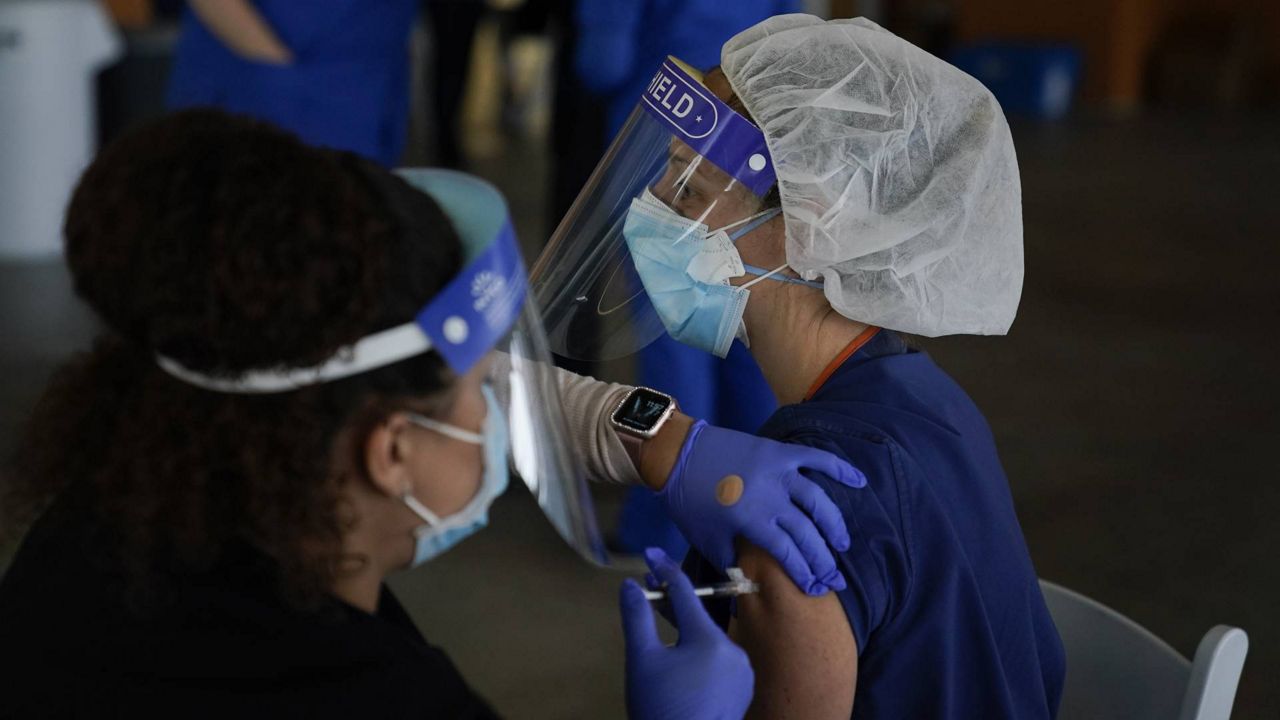WASHINGTON — The massive COVID-19 vaccination effort picked up steam this week, with Dodger Stadium, Disneyland, the Long Beach Convention Center, and other large venues being transformed into inoculation sites.
But as the number of people who are eligible to receive the vaccine expands to include essential workers, people aged 65 and older, those with underlying health conditions, and (eventually) everyone, organizing the process is becoming an issue.
“It’s not just about getting the vaccine,” said David Rhew, chief medical officer and vice president of global healthcare for Microsoft. “There are challenges of long lines, crowded waiting rooms, people waiting only to be sent home because they’ve run out of vaccine. That will create frustration and anger, so we need to understand how to manage the flow of patients into the system.”
Speaking as part of a pandemic response round table at this week’s Consumer Electronics Show, Rhew said Microsoft is looking at ways to get in front of the problem by determining who’s eligible to receive the vaccine, pre-registering them, and allocating time slots for them to receive it.
“This will be particularly important with second doses,” he said, adding that the window for receiving the follow-up shot is 21 to 28 days later. “We’re looking at a couple logistical challenges here.”
Microsoft is working to deploy the same artificial intelligence chatbot it developed and launched for Providence Health & Services in the Seattle area, where the COVID outbreak first began in the U.S. in early 2020. The Coronavirus Self-Checker is now used by the U.S. Centers for Disease Control and 25 other countries to provide individualized recommendations for people experiencing COVID symptoms.
“The recommendations are all digitized, so you can go to a link to register for testing or a virtual care visit,” Rhew said. “That same technology can be executed to address the need of patients with questions about vaccinations, which can pull them into a system to be pre-registered and do phased scheduling. The process needs to be organized and streamlined.”
About 17 million doses of vaccine have been distributed, Rhew explained, but only 4.8 million of those doses have gotten into individuals’ arms. “We’re at that next phase where we need to talk about how to increase the vaccination rate but also do it in a prioritized manner.”
The existing infrastructure is not ready for the coming waves of people who will soon be eligible because “the current systems are not built for scale and volume or to handle the issue of doing this in the setting of a pandemic,” said Rhew. “They were built around on-demand: People want to come in, there’s enough supply. So what we have to do is rethink existing strategies. There are limitations to our current approach.”
Pre-qualification will be key, he said. "It’s not just about, 'I want a vaccine.' It’s, where do you fit in the priority schema.”
Having a system that pre-registers people for the vaccine has another benefit: it can help identify who isn’t signing up so they can be targeted for intervention to figure out why and answer any questions they might have.
The vaccination rollout is “a complex endeavor,” said Dr. Alexander Garza, chief community health officer for the not-for-profit SSM Health, during the CES round table Wednesday. “This is a pandemic where everybody is susceptible to the virus, so everybody needs to get immunized. It’s a brand-new vaccine that’s never been used before, developed in a record amount of time, trying to be distributed throughout the country. And by the way it’s a two-shot vaccine and you have to store one of them in ultra-cold refrigeration. I can’t think of any more challenges that you could throw at a vaccination program and be able to pull it off successfully.”
In the early days of the vaccine rollout, the challenge was how many vaccines would be available and when. Then it was figuring out ultra-cold refrigeration and then figuring out how to get people into the clinic to be vaccinated.
"Now it’s really just churning through that entire group so we can open it up to a broader population," said Garza.



